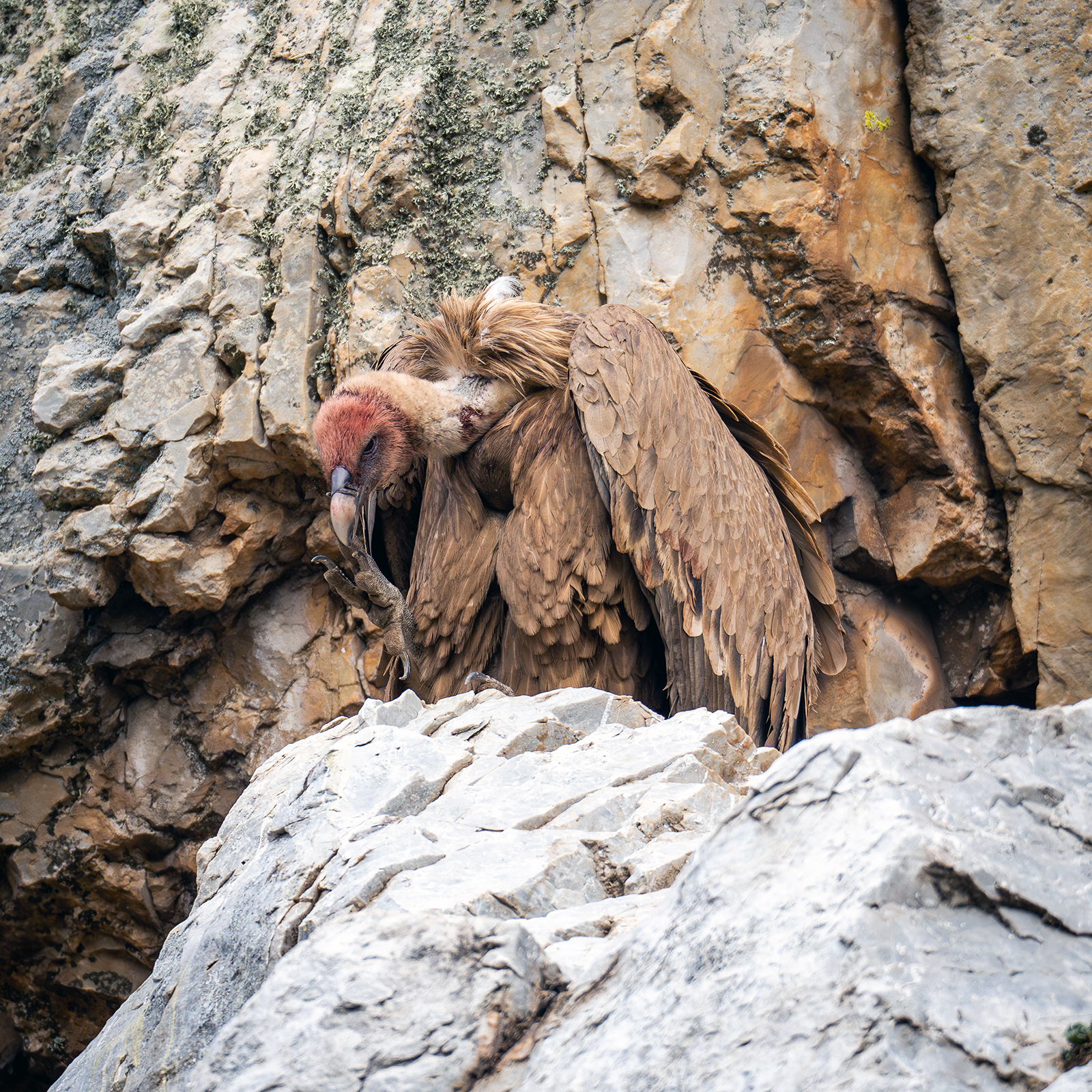
Ready for take off, Griffon Vulture, Extremadura, SpainMonfragüe National Park is a great place to observe vultures, however, it is not easy to get really close...unless the vulture decides to do so by itself...While watching and observing the vultures flying between the rocks, I suddenly heard a loud crashing of tree branches behind my back. A Griffon Vulture had landed, and according to my observation, not in the most elegant manner.

After the big feast, Griffon Vulture, Extremadura, SpainClose to the Castillo de Monfragüe is another excellent location in southern Spain to spot vultures. During our stay, we mostly saw Griffon Vultures, occupying the prime spots for their upcoming breeding time. They are known to take advantage from other vulture species by taking over their already built nest, even from larger vulture species.
This is one of the reasons why other vulture species have become more rare, since it is more difficult for them to breed successfully in the vicinity of Griffon Vultures, who start their breeding season just a bit later than others (so they can find prepared nests).
This is one of the reasons why other vulture species have become more rare, since it is more difficult for them to breed successfully in the vicinity of Griffon Vultures, who start their breeding season just a bit later than others (so they can find prepared nests).

Lifting up, Griffon Vulture, Extremadura, SpainUnfortunately, vultures in Europe are in general under threat. The major reason is that they do not find sufficient dead animals anymore, because farmers and authorities tend to remove a rotten carcass as early as possible, believing, that this helps to prevent diseases from spreading.
However, in the past, this health service was done by vultures and this very successfully over several thousands of years...but now, our bureaucracy believes that they know better than nature...
Luckily, in Spain, government has started to learn and to improve by feeding vultures, with meat or dead animals.
No need to explain, where this Griffon Vulture on the left was busy with. The color of its head says it all...and now, it felt the need to sharpen the claws again.
However, in the past, this health service was done by vultures and this very successfully over several thousands of years...but now, our bureaucracy believes that they know better than nature...
Luckily, in Spain, government has started to learn and to improve by feeding vultures, with meat or dead animals.
No need to explain, where this Griffon Vulture on the left was busy with. The color of its head says it all...and now, it felt the need to sharpen the claws again.

Iberian lynx out for breakfast, Sierra de Andujar, SpainEarly hazy morning in the Sierra de Andujar, Spain. I have settled down in the vicinity of a water hole, hoping to see lynxes coming to drink.
It is January and the morning temperature is cool to pleasant. Unfortunately for me, as I learned (later), during that time of the year, the lynx does not need to drink, because the humidity provided by the blood of its favored prey, the little rabbits, is sufficient. Only during the hot days of late spring or summer, the lynx will be drinking water regularly.
Luckily I still saw a lynx in the morning haze passing by...and ignoring the water completely.
It is January and the morning temperature is cool to pleasant. Unfortunately for me, as I learned (later), during that time of the year, the lynx does not need to drink, because the humidity provided by the blood of its favored prey, the little rabbits, is sufficient. Only during the hot days of late spring or summer, the lynx will be drinking water regularly.
Luckily I still saw a lynx in the morning haze passing by...and ignoring the water completely.

Morning walk, Iberian Lynx, Sierra de Andujar, SpainWhile lynxes normally hunt during nighttime, life in Sierra de Andujar is a bit different. Because the major and favorite prey, the little rabbits, are only active during daylight, the lynx has to adjust its habits and therefore can enjoy a good night rest.




